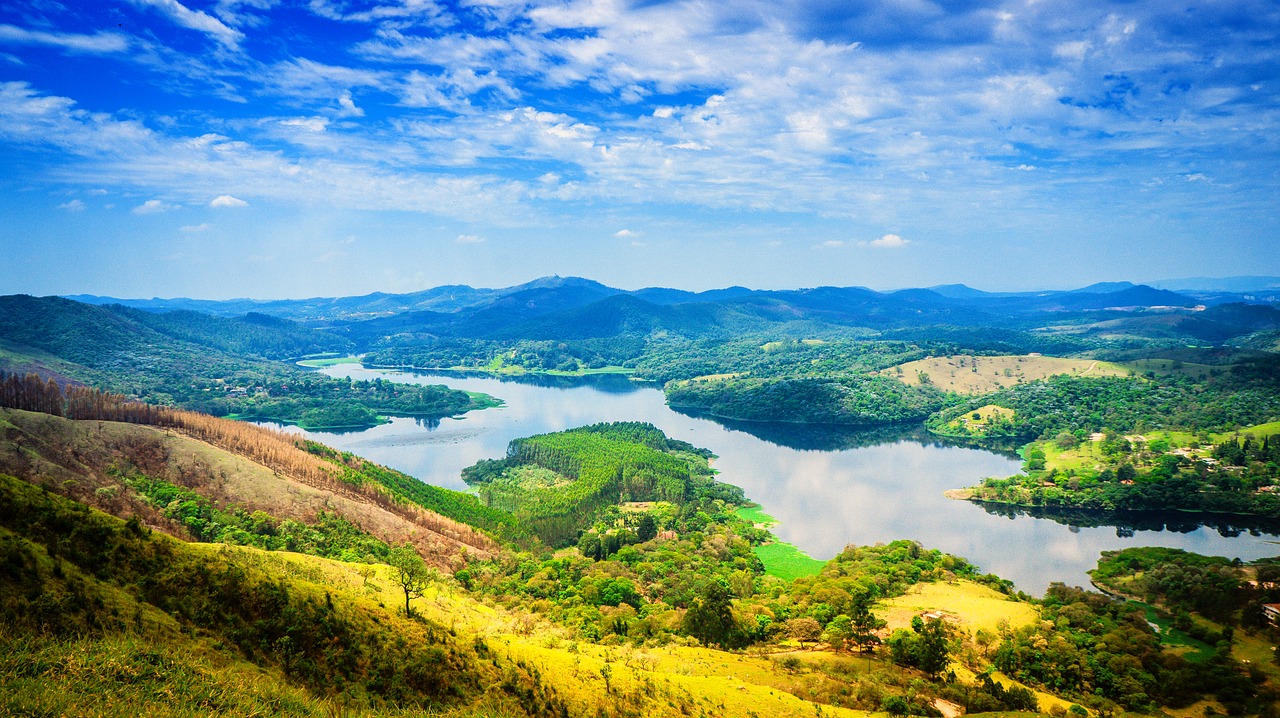 Have you ever hiked through a forest and noticed the incredible diversity of organisms living together, from ferns to trees to mushrooms the size of dinner plates? Or taken a road trip and watched the landscape change outside the window, shifting from oak forest to tall stands of pine to grassy plains?
Have you ever hiked through a forest and noticed the incredible diversity of organisms living together, from ferns to trees to mushrooms the size of dinner plates? Or taken a road trip and watched the landscape change outside the window, shifting from oak forest to tall stands of pine to grassy plains?
If so, you’ve got a classic taste of ecology, the branch of biology that examines how organisms interact with each other and with their physical environment.
Ecology isn’t just about species-rich forests, pristine wilderness, or scenic vistas, though. Have you, for instance, ever found cockroaches living under your bed, mold growing in your shower, or even fungus creeping in between your toes? If so, then you’ve seen equally valid examples of ecology in action.
Biotic and Abiotic Factors
One core goal of ecology is to understand the distribution and abundance of living things in the physical environment. For instance, your backyard or neighborhood park probably has a very different set of plants, animals, and fungi than the backyard of a fellow Khan Academy learner on the opposite side of the globe. These patterns in nature are driven by interactions among organisms as well as between organisms and their physical environment.
As an example, let’s go back to our shower mold. Mold is more likely to appear in your shower than, say, your sock drawer. Why might this be the case?
Maybe the mold needs a certain amount of water to grow, and this amount of water is found only in the shower. Water availability is an example of an abiotic, or nonliving, the factor that can affect the distribution of organisms.
Maybe mold feeds off of dead skin cells found in the shower, but not in the dresser. Availability of nutrients provided by other organisms is an example of a biotic, living-organism-related, factor that can influence distribution.
Case study: the Red Panda
Let’s apply the idea of biotic and abiotic factors to another organism, one that a field ecologist might be likely to study. Red pandas are distant relatives of raccoons and are found only in the eastern Himalayas. They spend most of their time in trees and eat a primarily vegetarian diet. In recent years, the red panda population has dropped significantly, leading conservation groups to classify it as a vulnerable or endangered species.
What are the main factors behind this change in abundance? Ecologists have found that biotic factors, such as logging of trees and the introduction of diseases from domestic dogs, played a major role in the decline of red panda populations. Abiotic factors have been less important to date, but changing temperatures could cause further habitat loss in the future.
Understanding the main factors responsible for the decline in red panda numbers helps ecologists form conservation plans to protect the species.
How do ecologists ask questions?
To ask questions about the natural world—such as, “Why is the red panda declining?”—ecologists draw on many areas of biology and related disciplines. These include biochemistry, physiology, evolution, behavioral biology, and molecular biology, as well as geology, chemistry, and physics.
Natural historians were arguably the first ecologists—dating back to the Greek philosopher Aristotle! However, today’s ecologists are rigorous, quantitative scientists. They run controlled experiments, use statistics to find patterns in large datasets, and build mathematical models of ecological interactions.
Ecology at Many Scales
Within the discipline of ecology, researchers work at five broad levels, sometimes discretely and sometimes with overlap: organism, population, community, ecosystem, and biosphere.
Let’s take a look at each level.
- Organism: Organismal ecologists study adaptations, beneficial features arising by natural selection, that allow organisms to live in specific habitats. These adaptations can be morphological, physiological, or behavioral.
- Population: A population is a group of organisms of the same species that live in the same area at the same time. Population ecologists study the size, density, and structure of populations and how they change over time.
- Community: A biological community consists of all the populations of different species that live in a given area. Community ecologists focus on interactions between populations and how these interactions shape the community.
- Ecosystem: An ecosystem consists of all the organisms in an area, the community, and the abiotic factors that influence that community. Ecosystem ecologists often focus on the flow of energy and recycling of nutrients.
- Biosphere: The biosphere is planet Earth, viewed as an ecological system. Ecologists working at the biosphere level may study global patterns—for example, climate or species distribution—interactions among ecosystems, and phenomena that affect the entire globe, such as climate change.
The five levels of ecology are listed above from small to large. They build progressively—populations are made up of individuals; communities are made up of populations; ecosystems are made up of a community plus its environment; and so forth. Each level of organization has emergent properties, new properties that are not present in the level’s component parts but emerge from these parts’ interactions and relationships.
The levels of ecological study offer different insights into how organisms interact with each other and the environment. I like to think of these levels as magnifying glasses of different strengths. If you really want to get what’s going on in a particular ecological system, you’ll likely want to use more than one!

